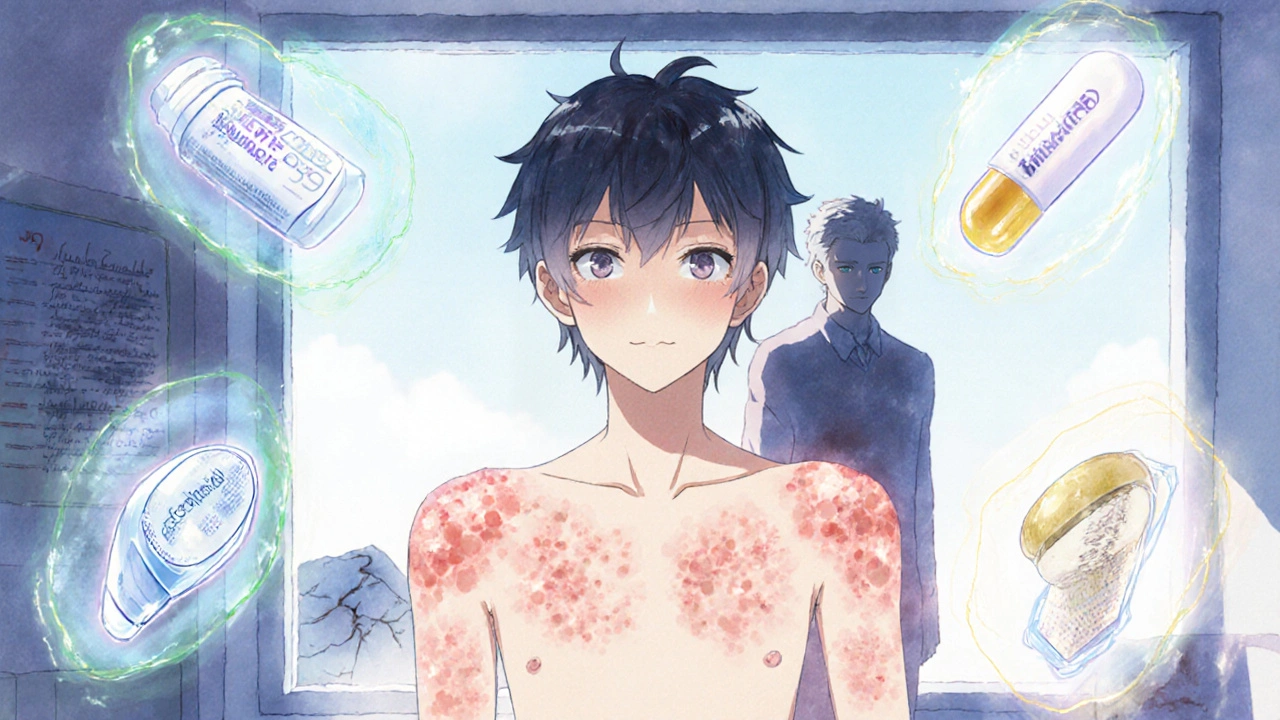Dapsone treats skin conditions like dermatitis herpetiformis and leprosy, but side effects like anemia and nerve damage are common. Learn about safer, effective alternatives including colchicine, doxycycline, and rituximab.
Read MoreDermatitis Herpetiformis: Causes, Triggers, and Treatment Options
When you think of a skin rash, you might picture poison ivy or an allergic reaction—but dermatitis herpetiformis, a long-term autoimmune skin disorder triggered by gluten intake. Also known as Gluten Rash, it’s not caused by viruses or bacteria. It’s your immune system attacking your own skin because of something you eat. The blisters and intense itching don’t come from contact with irritants. They come from the inside out—specifically, from gluten proteins in wheat, barley, or rye.
This condition is tightly linked to celiac disease, an autoimmune disorder where the small intestine gets damaged by gluten. About 1 in 10 people with dermatitis herpetiformis have silent celiac disease—they don’t have stomach pain or diarrhea, but their gut is still getting damaged. And if you have dermatitis herpetiformis, there’s a 75% chance you also have intestinal damage from gluten, even if you feel fine. That’s why doctors treat the skin with the same fix: a strict, lifelong gluten-free diet.
Most people start with a prescription for dapsone, an antibiotic that quickly calms the itching and reduces blisters. It works fast—sometimes in days—but it’s not a cure. It just masks the symptoms. Long-term use can affect your blood, so regular blood tests are needed. Many patients find they can lower the dose or stop it entirely after sticking to a gluten-free diet for 6 to 12 months. The skin clears up, the itching fades, and the risk of intestinal damage drops.
But going gluten-free isn’t easy. It’s not just about skipping bread. Gluten hides in soy sauce, salad dressings, processed meats, even some medications and supplements. Reading labels becomes a daily habit. And it’s not just about avoiding gluten—you also need to avoid cross-contamination. A toaster used for regular bread can ruin your progress. That’s why many people with this condition end up buying separate kitchen tools, or even switching to a gluten-free household.
There’s no magic supplement or herbal fix that replaces a gluten-free diet. No cream will heal this from the outside. The only proven path is removing the trigger—and giving your body time to repair itself. People who stick with it often report not just clearer skin, but more energy, fewer digestive issues, and even better mood. It’s not a quick fix, but it’s the only one that works.
Below, you’ll find real-world guides on managing this condition: how to talk to your doctor about dapsone, what to look for on food labels, how to handle flare-ups, and what alternatives exist if you can’t tolerate the medication. No fluff. Just what works.
